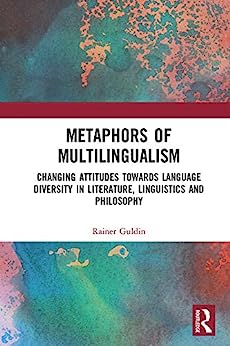


Translation, multilingualism and metaphor are connected in many ways.
My first essay exploring the metaphorical dimension of translation was “Metaphor as a Metaphor for Translation” (in: Thinking through Translation with Metaphors, ed. by J. St. André 2010) which was dedicated to the reciprocal metaphoricity of the two notions of translation and metaphor and their common history in the West. Both translation and metaphor were long considered of secondary nature. In my book-length study, Translation as metaphor (2016), I tried to retrace this connection in view of the new importance of translation as one of the essential metaphors of modernity. Nowadays, translation and metaphor are no longer seen as simply derivative but as models that allow for perspectives that would not be visible without them. In Metaphors of Multilingualism. Changing Attitudes towards Language Diversity in Literature, Linguistics and Philosophy (2020) metaphor and translation meet multilingualism, another notion that has long been considered of problematic nature because of its shifting multidimensional character.
My interest in translation and self/translation began in connection with Vilém Flusser who self-translated all his texts. It has been expanding ever since: self-translation and the constitution of sexual identity in the work of Julien Green, Louis Wolfson, Raymond Federman, Christine Brooke-Rose and Abdelkebir Khatibi; self-translation and the notion of anthropophagy; the metaphor of translation within media and communication theory; the use of spatial metaphors in translation theory; geography, landscape and translation; the use of body metaphors in multilingualism.

In the 1990s, Vladimir Nabokov’s bilingual, Russian and English work drew my interest in multilingual writing, a practice that is always intimately related to the notions of translation and self-translation. As I did not speak Russian well enough, I transferred my interest to the multilingual work of Vilém Flusser who wrote in German, Portuguese, English and French, moving back and forth between these different languages. In this way, multilingualism and (self)translation were naturally connected. This led to the writing of Philosophieren zwischen den Sprachen. Vilém Flussers Werk (2005).
I have also worked on multilingualism and self-translation in the work of Georges-Arthur Goldschmidt, as well as on their significance for literary Modernism and the notion of the Gesamtkunstwerk. I have also explored the metaphoricity of translation and the metaphors of space and time in relation to processes of translation